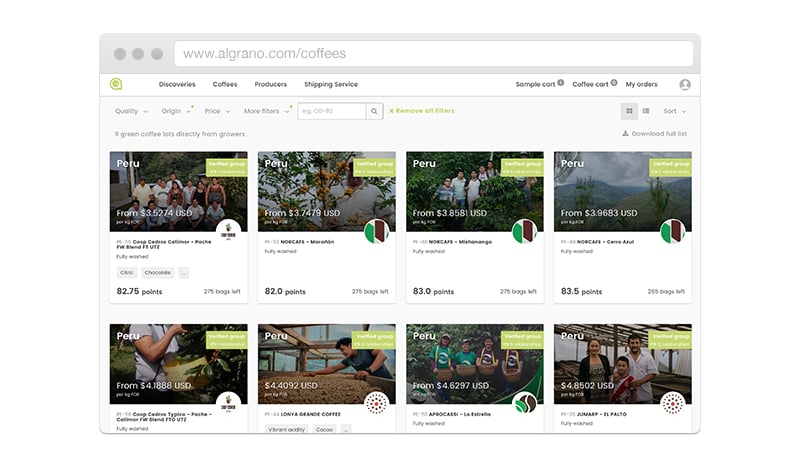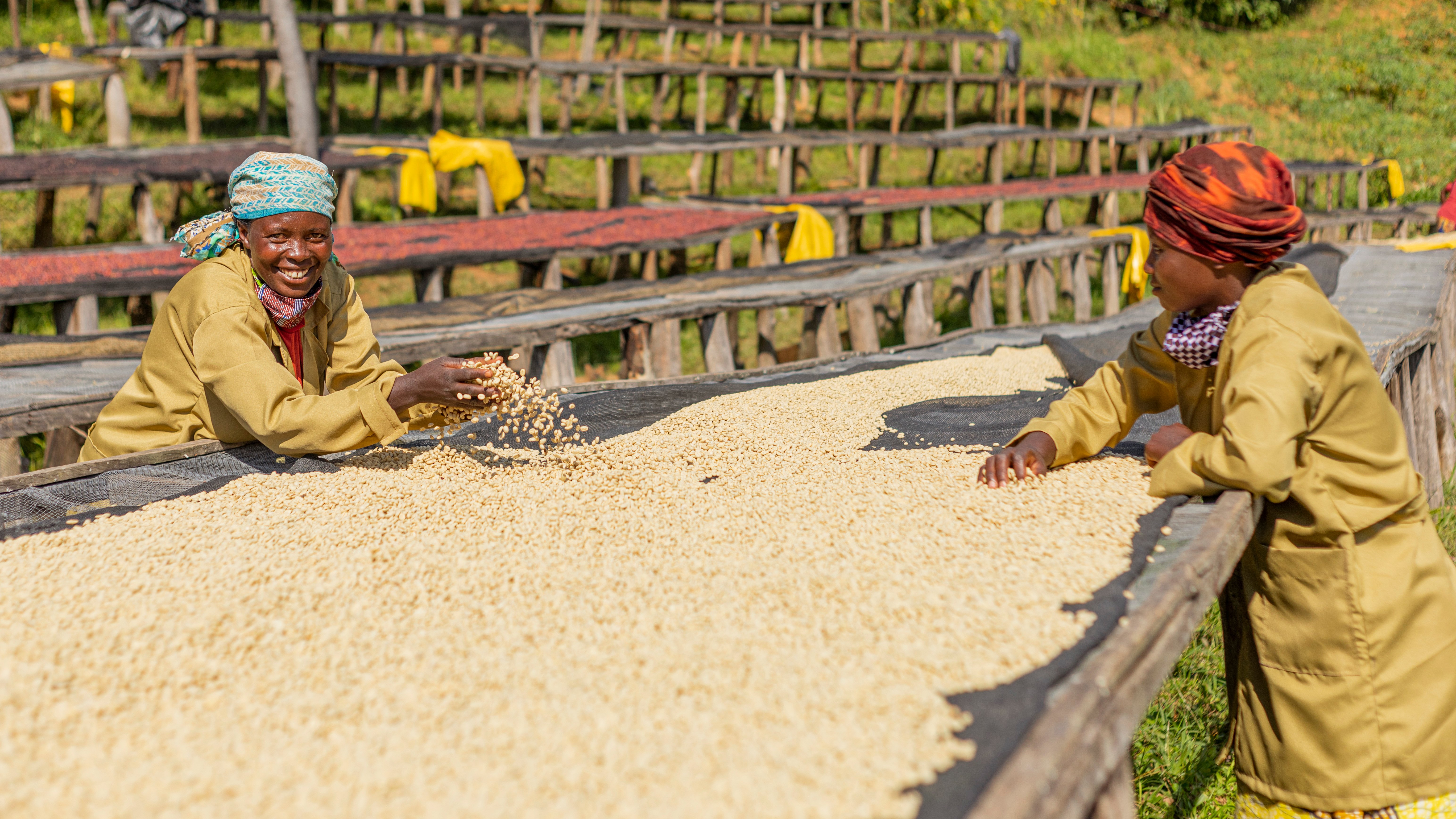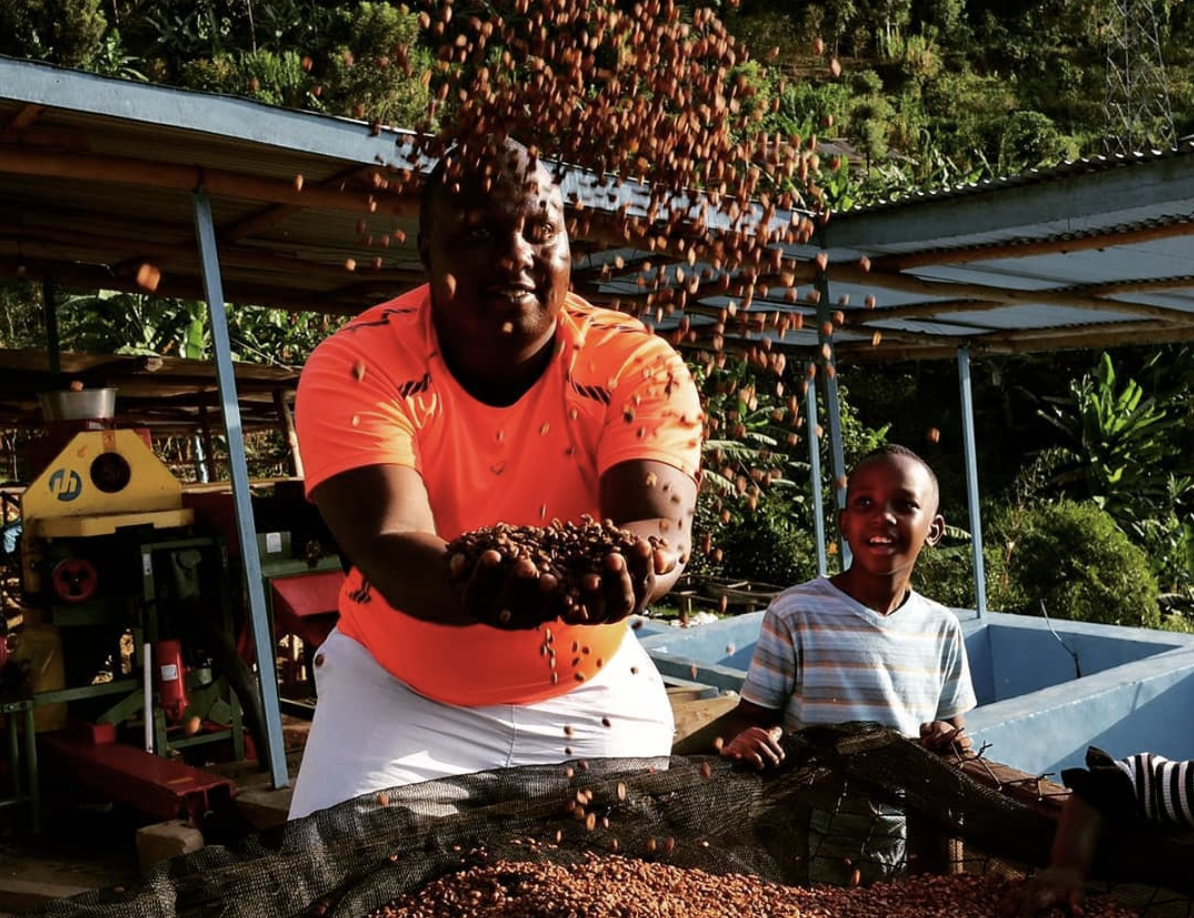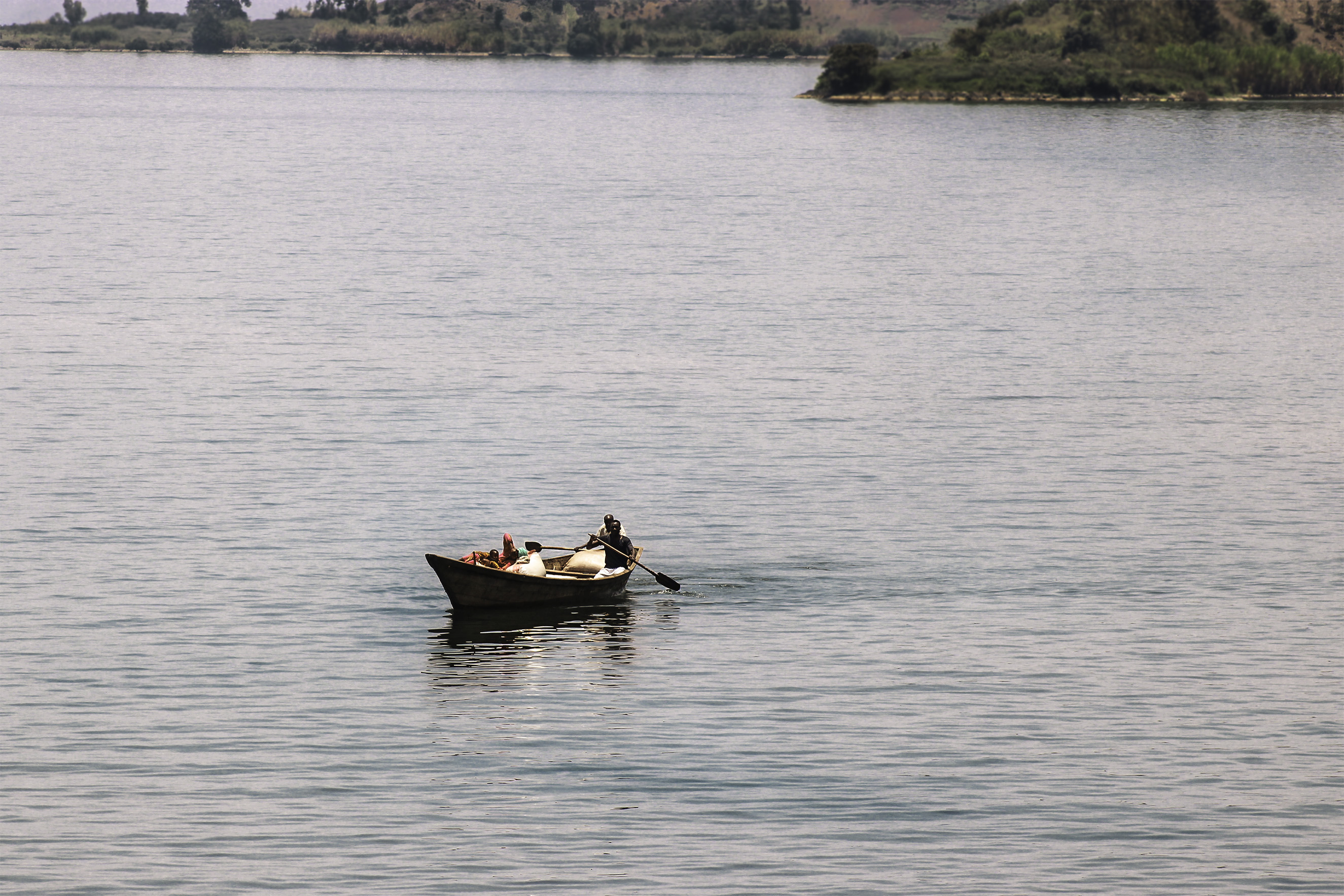Rwanda 2020
Menya u Rwanda - Discover Rwanda
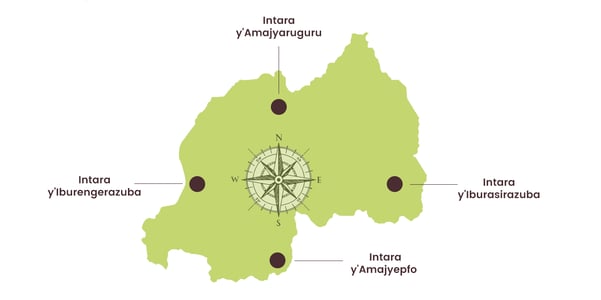
You can fit 42 Rwandas inside Ethiopia. 22 inside Kenya. 36 inside Tanzania. Rwanda’s size puts the country in a delicate position in the international coffee market, not being able to compete with its neighbours in volume. However, Rwanda’s size offers the curious roaster the chance to better comprehend the territory and to explore coffee on all the corners of the land.
Rwanda is divided into 5 provinces including Kigali, the capital. The administrative divisions were redrawn in 2006 to reflect a compass, part of the government’s integrationist strategy meant to weaken ethnic differences by blending old states into multi-ethnic areas. They are Intara y'Amajyaruguru (Northern Province, in local Kinyarwanda), Intara y'Amajyepfo (Southern Province), Intara y'Iburasirazuba (Eastearn Province) and Intara y'Iburengerazuba (Western Province).
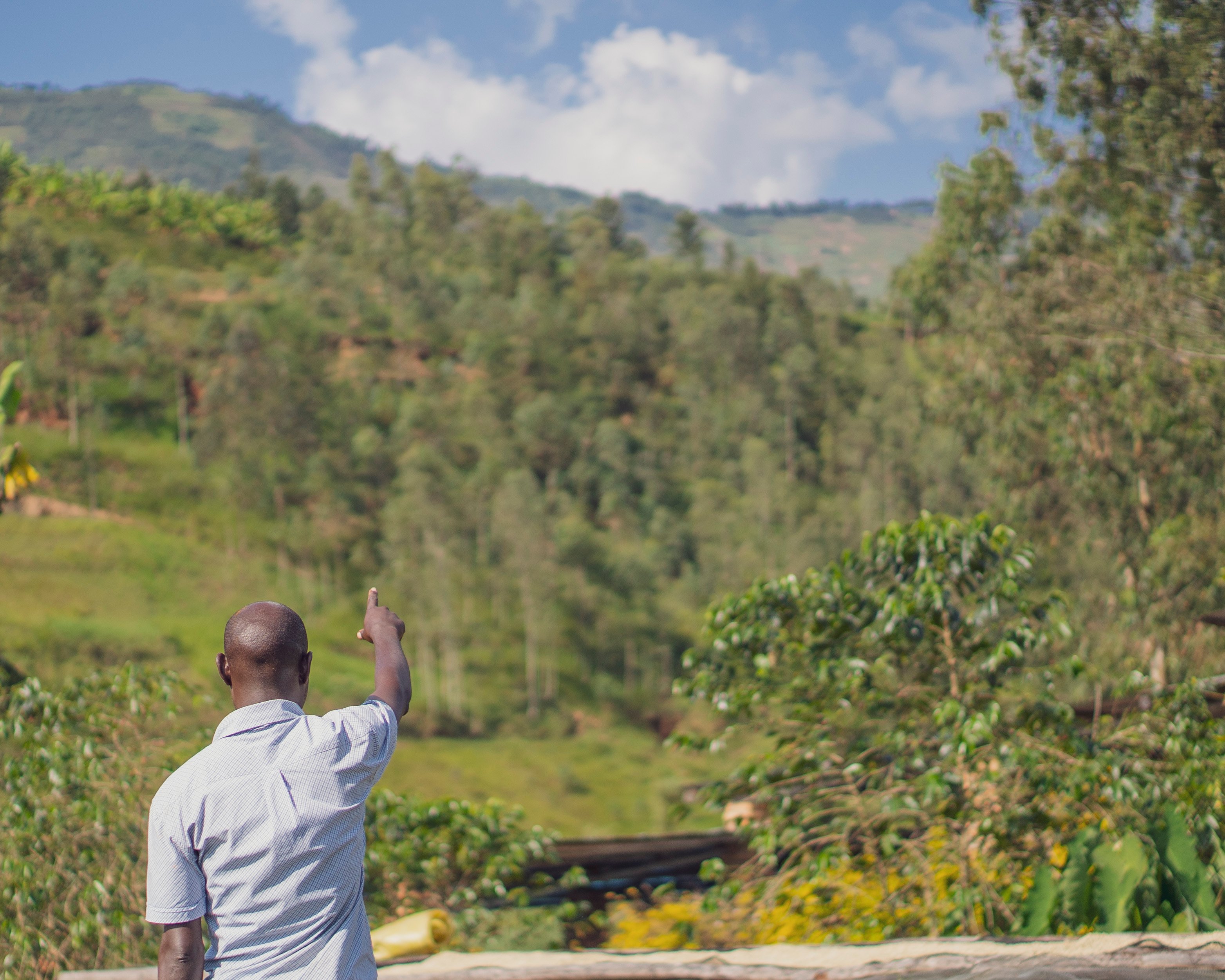
As this is the first season Rwandese producers offer coffee on Algrano, they came up with a selection of lots from the 4 corners of the country so that roasters can truly have a taste of their country. From the North, you’ll find coffees from Rulindo and Gakenke districts. From the South, Nyamagabe and Nyaruguru. From the East, Gatsibo. And from the West, by the shore of Lake Kivu, Nyamagabe and Nyaruguru.
Coffee
Though less prized than the profiles from other Eastern African countries, Rwandese coffees are of a curious breed reminiscent of the hybrid creatures of ancient mythology. Think of the bright acidity of Kenya combined with the juicy florals of Ethiopia and the mouthfeel and sweetness of Central America. Coffees from the Northen and Southern provinces tend to be more fruit-forward (berries, stewed fruit) and sweet, whilst coffees from the Western and Eastern provinces often present balanced profiles with spices, stone fruits and citrus notes.
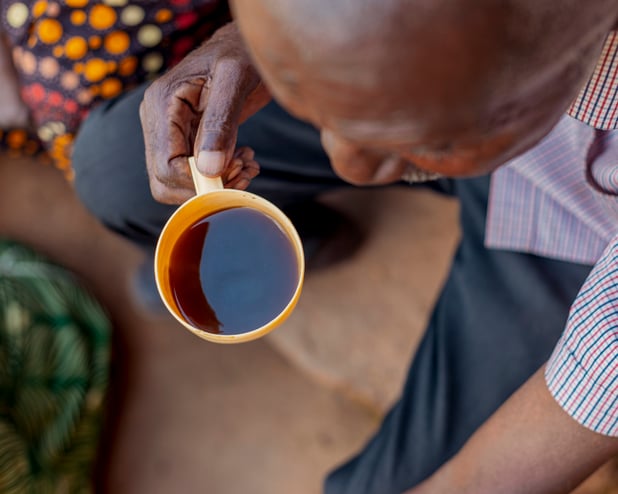
The acidity of washed Rwandese coffees is often sweet and sour, with notes ranging from grapefruit and lemon to cranberries and blackcurrants. It is, however, usually more balanced than in Kenyan coffees, offset by the creaminess of the body, undertones of spices and a chocolatey aftertaste. Naturals can be intensely fruity, with notes of tropical fruits and berries, and heavy in body - perfect for creating interesting espresso-based drinks.
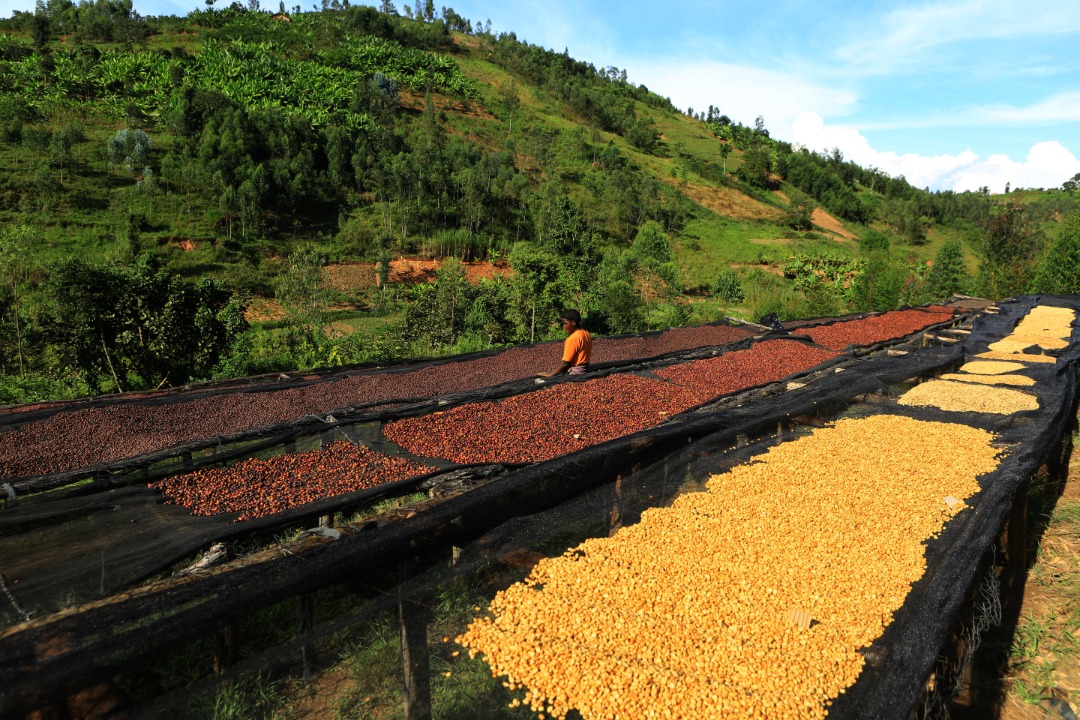
Naturals from Rwanda have been in trend over the past three years, pioneered by companies like Muraho Trading Co. According to NAEB (National Agricultural Export Development Board), this method still represents less than 1% of the total production and has only been included in the official statistics in 2017. Naturals are heavily regulated by NAEB, who controls the quality of Rwandese coffee to ensure competitiveness.
Landscape/History
The first coffee tree in Rwanda - of the Bourbon species - was planted in 1893 in the Mibirizi sector of Rusizi district brought by German missionaries. The production only took off after World War I when the country passed over to Belgian rule. The colonial period is in the root of the conflicts between the Hutus and the Tutsi, which first exploded in 1959 and ultimately resulted in Rwanda’s independence in 1962, and later culminated in 1994 with the genocide.
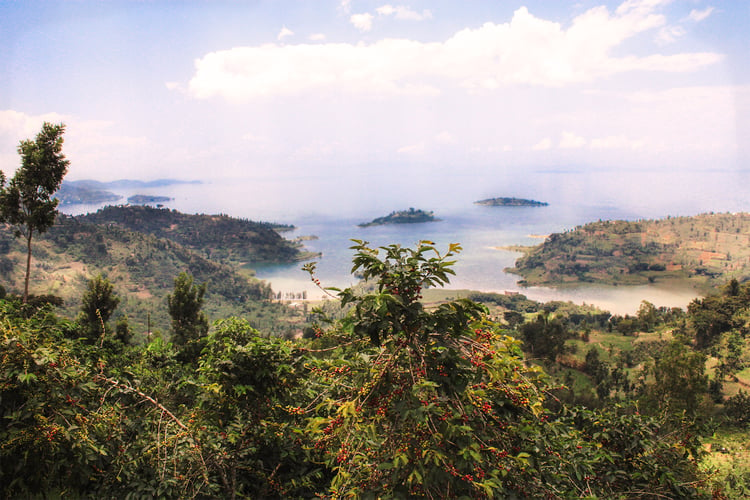
Though the genocide is often used by roasters when telling the story of Rwandan coffee - the episode was devastating to the sector and also a turning point after which the government decided to invest in reviving the industry -, the country is rewriting its own story in a different angle. Today, Rwanda is one of the safest countries in Central/Eastern Africa and has good infrastructure, making it easy for visitors to navigate.
Rwanda is also a leading country in tacking single-use plastic, having banned plastic bags in 2008, and it is the top country for women in politics. Today, 61% of the parliament is female, the highest percentage in the globe. Women and youth are also more representative in the coffee sector than in any neighbouring country and farmers receive higher percentages of the FOB price in Rwanda than in Ethiopia, Kenya, Burundi and Tanzania.

There are around 100 cooperatives in the country, a model imported by colonialists in the 1960s and encouraged by the government later on with support from international agencies such as PEARL (Partnership for Enhancing Agriculture in Rwanda through Linkages). Though dominated by foreign companies, the local market has seen a boom of Rwandese-owned exporting businesses and private washing stations who work closely with the community. It is the case of Baho Coffee, Gasharu and Caferwa, who will be offering coffee to Europe through Algrano this season.
Quick Facts
Production: 98% of Rwanda’s coffee is Arabica, mainly of the Bourbon variety. The rest is robusta. The yearly volume ranges from 16.000 MT to 21.000 MT (metric tons), which represents about 0.2% of the global coffee production

Number of producers: There are over 400.000 farmers in the country distributed on 42.000 hectares of land
Average farm: The average farm size in Rwanda is 0.08 hectares. Productivity is estimated at about 2–3 kg per tree, and consistent with the average for Sub-Saharan Africa
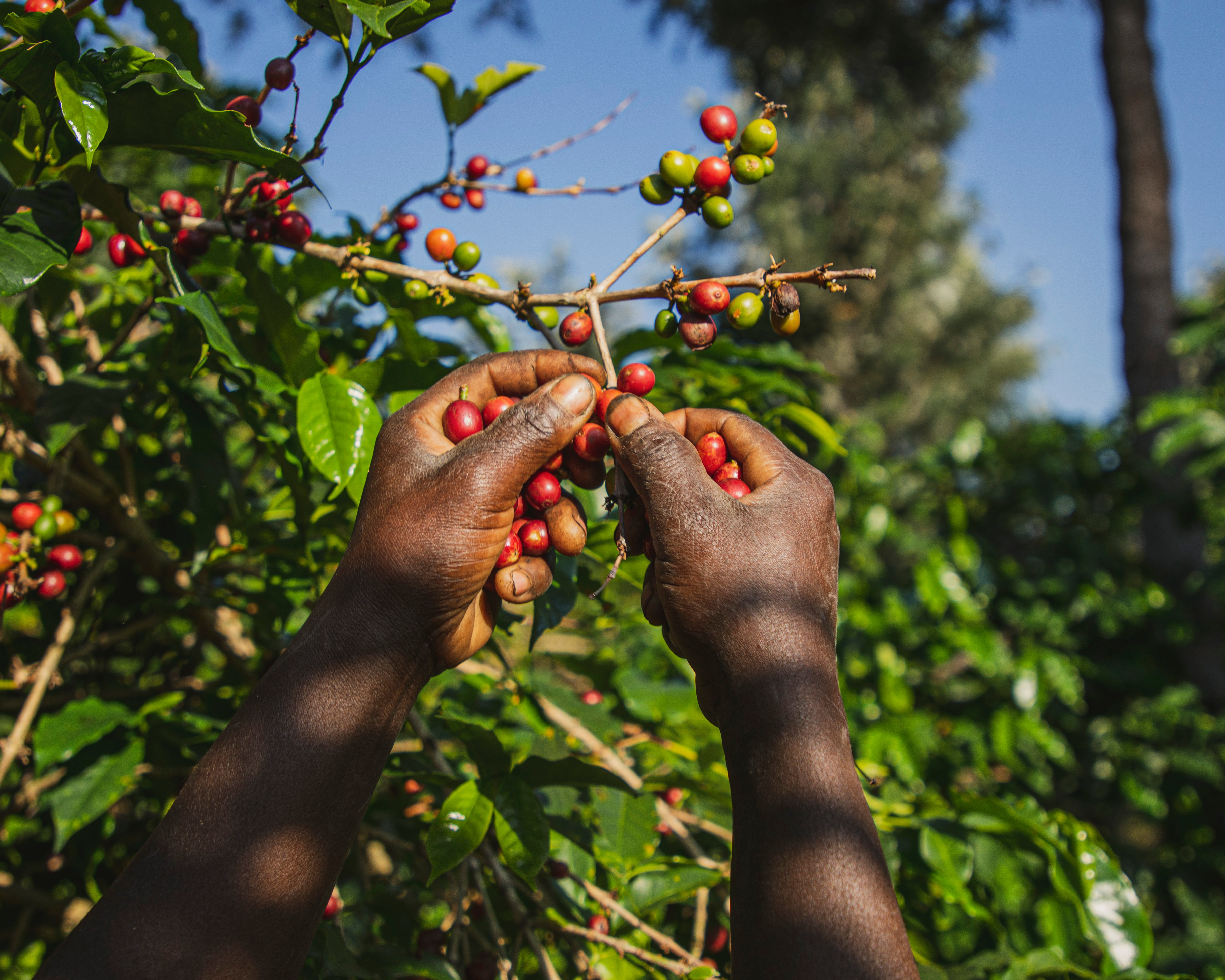
Altitude range: 1300m to 2500 m
Soil: A mix of volcanic, clay loam and acidic
Washing stations: From only two in 2002, there are now nearly 300 CWSs active in the country and more than 60% are privately owned. The oldest CWS in the country is Nkora in the Western Province, owned by Caferwa
Fully washed coffees: Around 60% of Rwandan coffees are processed as Fully Washed, rising from 35% in the 2011/12 season. The trend began in the early 2000s due to government support for the sector after the genocide, facilitating the building of new washing stations. Cherries harvested by farmers are carried to CWSs within their zone. Quality control is done before entering the mill. This includes checks on moisture content, weighing, the physical appearance of the bean and the presence of a fermentation odour. At the CWS the cherries are pulped, fermented and graded using flotation channels. The wet parchment is then soaked for up to 24 hours, before being pre-dried under shade, sorted and dried again
.jpeg?width=1080&name=WhatsApp%20Image%202020-05-27%20at%2021.19.46%20(1).jpeg)
Semi-washed coffees (low grade or “ordinary coffee”): Around 24% of the total volume. The semi-washed coffee is processed at home (often from the cherries refused by the CWS) using a hand-powered pulping machine and generally traded via middlemen. The Rwandan government discourages semi-washed coffees in order to control quality and make Rwanda’s coffee more competitive
Honeys, naturals and other methods: Less than 1%. NAEB officially included it in its statistics only in 2017, when it indicated an export of 130 MT of “Naturals” and a little under 50 MT of “Honey”. The largest competitor for naturals in East Africa is Ethiopia and Rwanda also struggles with limited space for drying
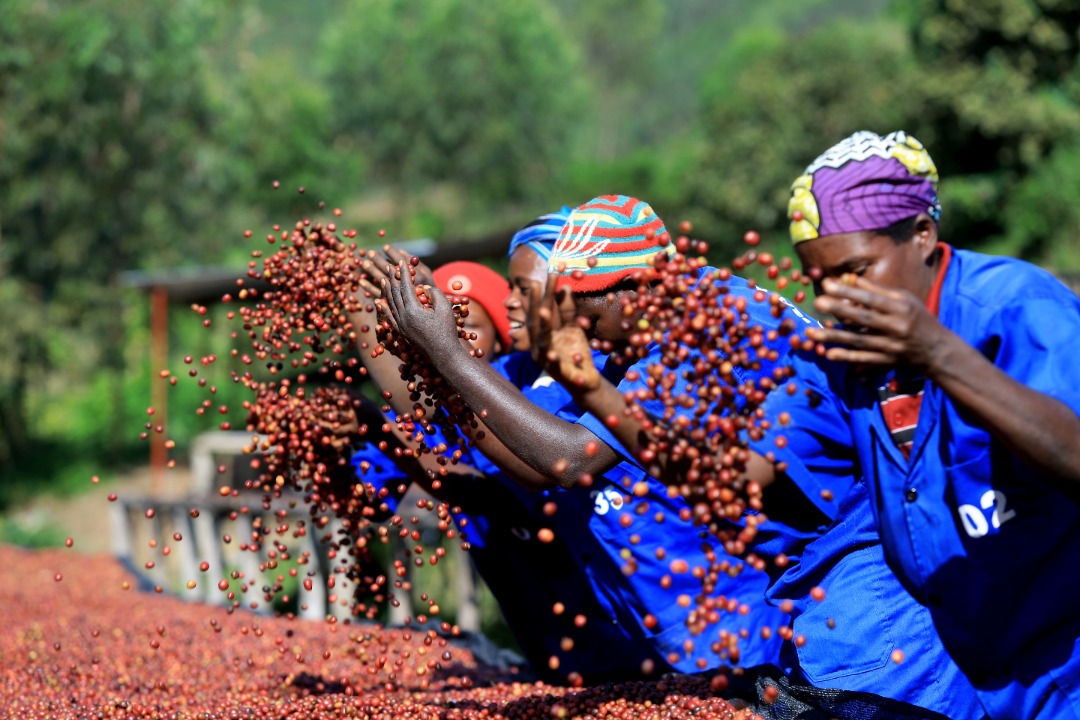
Certified coffees: The share of certified coffees in Rwanda is at around 30%. The current production of Fairtrade is 3.340 MT (of which 60% organic certified). IN 2016, the total area under organic coffee production was 203 ha, which is less than 1% of the total area in which coffee is produced. Fertilisers and pesticides are freely distributed by the government, making producing organically a challenge
Equality: Rwanda scored fourth place in the Global Gender Gap Index of 2017 after Iceland, Norway and Finland (World Economic Forum, 2017)
.jpg?width=4278&name=4K8A2237%20(2).jpg)
*Sources: Caferwa, Baho Coffee, Gasharu, NAEB, GCP, CBI
